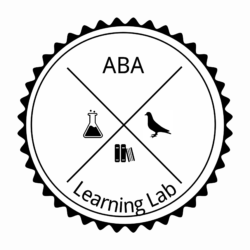James Macon, M.Ed., BCBA
Behavior Analyst are experts in changing behavior. Whether teaching new skills or reducing old, troublesome behavior, Behavior Analysts are up to the task. Having said that, behavior is understandably a large topic to cover. And just because a Behavior Analyst can change someone’s behavior doesn’t mean that they can necessarily teach others to change behavior (which is a different skill set). Indeed, there are Behavior Analysts who devote their professional careers to enhancing staff training research and technologies (see Dr. Denny Reid and Dr. Marsha Parson for a couple examples).
The good news is if you’re a practitioner looking to become a better trainer, you don’t need to devote thousands of hours to research, as some pretty cool researchers have already done the hard work for us. You just have to be familiar with their research, and get some experiential reps in. Here are a few take ways you can use to start training better today.
Use Behavioral Skills Training.
Talk is cheap. So are verbal affirmations and descriptions of procedures, when really what we want to see is performance. You wouldn’t consider someone who could only describe tennis to be a tennis professional… you would want to see them in action. Similarly, when training staff, its not enough that we just describe what we’re looking for and have them repeat it back to us. We need to see them in action.
Using Behavioral Skills Training (BST) is a simple, evidence based procedure for quickly accomplishing this and training staff to competency. While there are several minor variations of it, it involves describing what you want to see, providing a demonstration of it, rehearsal, and feedback. Dr. Reid describes the basic training procedure in 5 steps, seen below.
BST
- Vocally describe target skills.
- Provide written summary
- Demonstrate skills
- Trainee practice of skills with feedback
- Repeat steps 1, 3, & 4 until observed competence
Role-play
Often hidden amongst the steps of BST is the need for realistic role-play. Make no mistake though, its in there. When we are training using BST, we’ve described what we want to see, we demonstrate it, and then we practice it, until we reach competency. But to do this, we often need a confederate to act as the client. This is especially true when dealing with challenging or dangerous behaviors.
I will often prepare a “script” of likely scenarios and ask one of my behavioral technicians to “become” the client, and act accordingly. I will even ask them to vary the script as they see appropriate, focusing on a wide range of both good and “bad” behaviors that I need staff to react to. As my staff acts as the client, I demonstrate the appropriate procedures. Other staff that we are training must then practice those procedures with the confederate. As we are role-playing and rehearsing, I use an Integrity Assessment to measure accuracy, and at the end, provide feedback on the entire procedure.
In addition to training actual performance and doing it quickly, my staff have reported that they really enjoy the role-playing scenarios. It gives them an opportunity to work together, showcase their skillset, and also be a little goofy. It also acknowledges their expertise in working with their client, and can build significant value and rapport between supervisor and supervisee. At the end of the day, a happy staff is a more engaged and productive staff, and probably leads to a happier client.
Delivering Feedback.
When staff training doesn’t go as planned, and there is a need for specific performance feedback, it matters how we do it. Fortunately, feedback as a technology has come a long way since the “poop-sandwich” method many of us were trained in. That is, starting with a positive statement, telling them what they did wrong, and then returning to a positive statement is rarely sufficient. Even worse, your positive statements can lose meaning and value as your staff learn over time that they should be preparing for something negative. Bottom line, no one likes to eat a poop sandwich.
Parson and Reid have done extensive research on a more methodical approach to feedback. Their 7 steps to feedback still begins with a positive statement, but instead of going negative, it specifies what the performer did correctly. Incorrect performance is then specified, along with how to change and improve their performance (use BST!). Instead of just ending there, they have staff solicit questions, and then describe next steps to be done. Below is their detailed 7 steps to feedback
7 steps for delivering feedback
- Begin with positive or empathetic statement
- Identify skills performed correctly
- Identify skills performed incorrectly
- Specify how to change/improve incorrect performance
- Solicit questions
- Describe next actions
- End with positive or empathetic statement
Staff training is a science, or at least if you want to do it effectively. Let us know what you have found to be effective!

